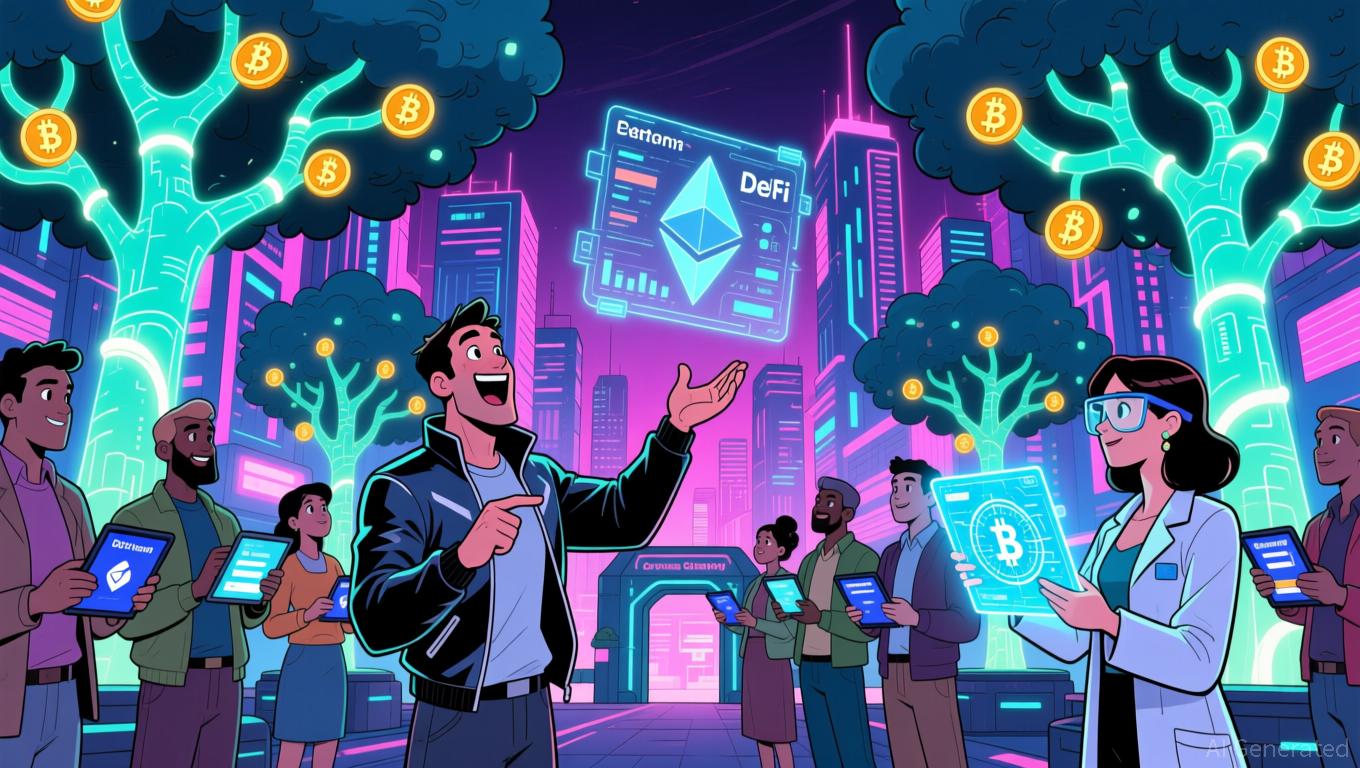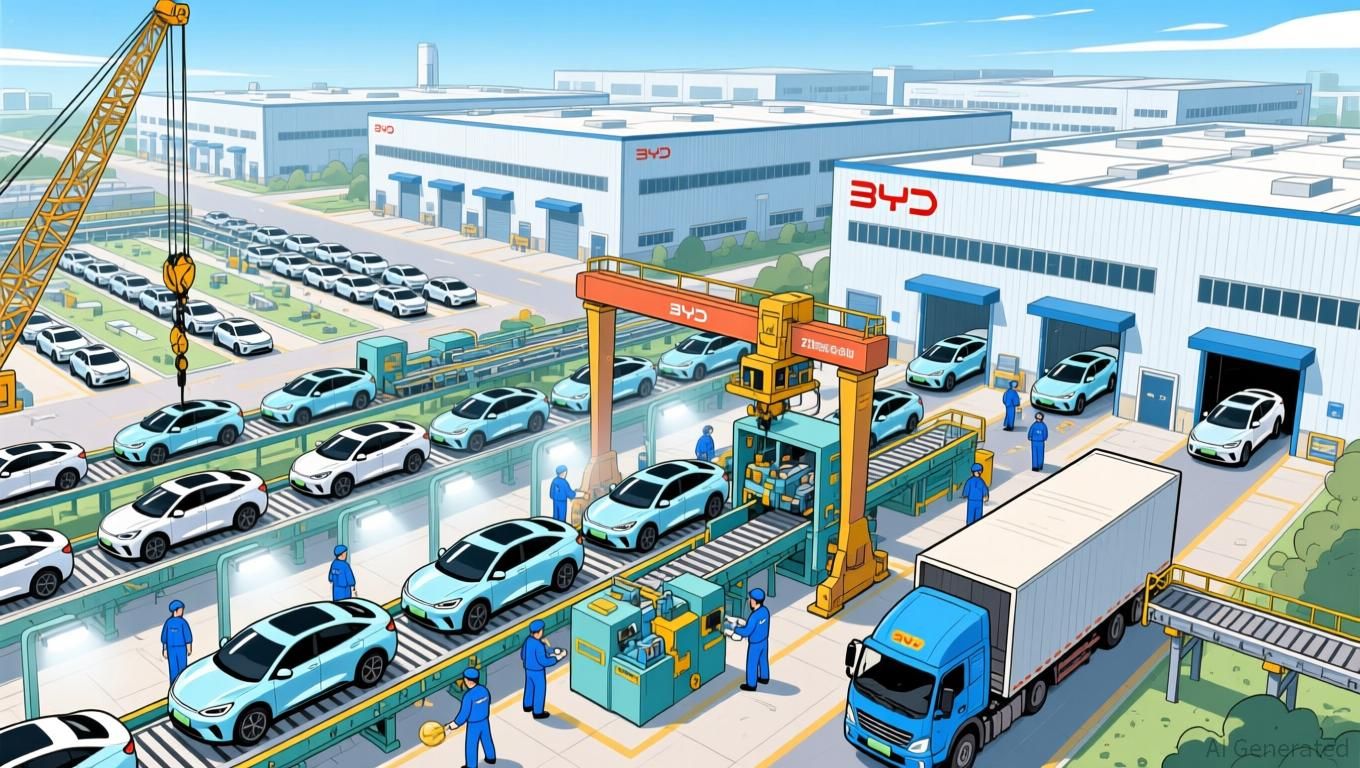JPMorgan and DBS Highlight Blockchain's Move Toward Real-World International Payments
- JPMorgan and DBS Bank launched a blockchain interoperability framework enabling real-time cross-chain tokenized deposit transfers for institutional clients. - The system connects JPMorgan's Kinexys platform with DBS's Token Services, addressing blockchain network incompatibility to streamline cross-border payments and trade finance. - The initiative aligns with global banks' push for tokenized deposit standards, supported by regulators like Singapore's MAS and potentially influencing future CBDC framewor
JPMorgan Chase & Co. and Singapore’s DBS Bank have introduced a blockchain interoperability solution that allows institutional clients to move tokenized deposits instantly between different blockchain platforms, representing a notable advancement for digital asset infrastructure adoption. Announced on Tuesday, this collaboration connects JPMorgan’s Kinexys Digital Payments system with DBS’s Token Services, establishing a cross-chain settlement process that functions around the clock without the need for conventional payment rails, according to a
This framework enables users of JPMorgan’s deposit tokens—created on Ethereum’s Layer-2 Base network—to transact with DBS clients whose tokens are managed on a permissioned blockchain. The solution tackles a major issue in blockchain finance: the lack of seamless interaction between separate networks. By supporting cross-chain settlements, the banks seek to streamline international transactions, especially in areas like cross-border payments and trade finance where efficiency and transparency are crucial, as described in a
Both banks already operate blockchain-powered payment platforms that enable immediate settlements within their own networks.
This partnership reflects a broader industry movement to create standards for tokenized deposit infrastructure. Over the last year, leading banks such as BNY Mellon, Barclays, and HSBC have launched similar projects, motivated by the promise of reduced costs and faster settlements. A 2024 survey by the Bank for International Settlements (BIS) found that about one-third of banks worldwide have started or are investigating tokenized deposit initiatives, indicating a shift from pilot blockchain projects to practical, scalable applications, as outlined in a
Regulators are paying close attention to these trends. The Monetary Authority of Singapore, for example, has backed DBS’s earlier tokenized asset efforts through its Project Guardian initiative. The JPMorgan-DBS collaboration extends this focus to institutional-level payment systems and may shape future models for central bank digital currencies (CBDCs), as explored in a
Although the framework is still in its pilot phase, the banks intend to trial it with selected institutional clients before expanding access. Both Naveen Mallela of JPMorgan and Rachel Chew of DBS highlighted the need to preserve the “singleness of money”—making sure tokenized deposits maintain their value and legal status across different networks, as previously referenced in the
This initiative highlights the ongoing competition among global banks to establish the foundation for tokenized money. As regulators and industry players address the challenges of cross-border compliance and technical integration, projects like this could help define interoperability standards and speed up the adoption of blockchain in mainstream financial systems.
---
Disclaimer: The content of this article solely reflects the author's opinion and does not represent the platform in any capacity. This article is not intended to serve as a reference for making investment decisions.
You may also like
Pi Coin’s Pursuit of AI Faces Challenges from Market Instability and Scalability Issues
- Pi Coin (PI) fell below $0.30 amid market volatility, despite a 21% surge driven by whale activity and 535% higher trading volume. - Node 0.5.4 upgrades improved reward accuracy and network reliability, addressing bugs in block creation and automatic updates. - Collaboration with OpenMind demonstrated Pi Nodes' AI processing potential, positioning the network as a decentralized computing alternative. - Sustaining gains above $0.27 is critical to test $0.36 resistance, while competition from Bitcoin and S
Ethereum News Update: Ethereum’s $201B Utility Boom Contrasts with ETH’s Stagnant Price—Is Broader Market Direction Needed?
- Ethereum's tokenized assets hit $201B, capturing 64% of global market share, driven by institutional adoption and stablecoin dominance. - Stablecoins like USDT/USDC and PayPal's PYUSD ($18.6B in 2025) fuel DeFi, cross-border payments, and exchange liquidity. - Tokenized RWAs ($12B) and BlackRock/Fidelity's on-chain funds surge 2,000% since 2024, outpacing traditional finance infrastructure. - ETH price remains below $3,500 despite strong fundamentals, with technical indicators showing weak buying pressur

Chinese electric vehicles push Ford to rethink its strategy as it faces major challenges and tariff issues
- Ford CEO Jim Farley warns Chinese EVs pose an "existential threat" to U.S. automakers , surpassing historical Japanese competition in scale and pricing risks. - Ford cancels three-row electric SUV, delays electric pickup to 2027, and prioritizes hybrids/commercial EVs amid $4.5B annual losses and 70% import tariffs. - BYD's Zhengzhou megafactory, producing 545K vehicles in 2024 and expanding to 20K employees, exemplifies Chinese rivals' aggressive production and market expansion. - Farley admits driving

These 3 AI-Rated Undervalued Altcoins Could Deliver Massive Returns Soon
